Language And Literature











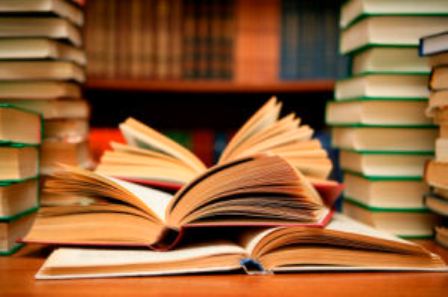
Language And Literature
One of the commonest ways of describing people is in terms of the language they speak. When we refer to a person as a Tamil or an Oriya, this usually means that he or she speaks Tamil or Oriya and lives in Tamil Nadu or Orissa. We also tend to associate each region with distinctive kinds of food, clothes, poetry, dance, music and painting. Sometimes we take these identities for granted and assume that they have existed from time immemorial. However, the frontiers separating regions have evolved over time (and in fact are still changing).
Language And Literature: The medieval period of Indian history saw the growth of several regional cultures. The spread of the Bhakti Movement from the 8th to the 15th century CE encouraged the growth of regional languages like Marathi, Hindi, Bangali. With the coming of the Persians, Turks and Arabs to India in the 12th century CE,their cultures intermingled with those of the Indians. Each region absorbed certain elements of Islamic culture, while retaining local traditions. The result was a variety of rich and vibrant regional cultures. Every region developed its own language, literature, dress, food habits, dance and music.
In the Medieval Period, Sanskrit and Persian were the common language till other languages developed. Many regional languages developed during this time and some great literary works were written in these language.
The rise of Persian: Several literature works were written in persian. Amir Khusrau's poems are sung by qawwals even today. The historian Barani, who lived in Delhi during the reign of Mohammad bin Tughlaq wrote the Tarikh-i-Firuz Shahi.
During the period of Mughal, especially during the time of Akbar, many Sanskrit works were translated into Persian. Abul Fuzl and his brother Faizi jointly translated the Mahabharata,Badauni translated the Ramayana, and Shah Mohammad Shahbad translated the Rajtarangini. Jahangir was adept in Persian, Turki and Hindi.

Writting in Hindi: Two forms of Hindi were used in the medieval period - Brajbhasha and Awadhi. Between the 8th and 10th century CE, several pieces of secular literature were written by the court poets of the Rajput kings in Hindi. The poets wrote praising the bravery and heroism of their rulers.
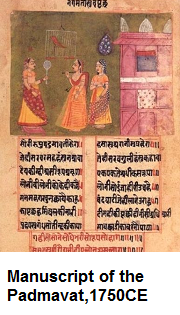
Other Regional Languages: Other regional languages that the developed between the 8th and the 15th centuries CE included Tamil, Bengali, Marathi, Gujrati, Telugu, Kannada and Punjabi.
Paintings: Indian had a fine tradition in the art of painting. Most of the painting of the early medieval period were based on religious themes and showed episodes from the Hindu epics, or Jain and Buddhist literature. The exquisite, beautifully coloured paintings at Anjanta and Ellora were created between 600 and 1000 CE. The paintings and sculptures are devoted to Buddhism, Hinduism and Jainism. Most of the paintings tell ancient tales of courtly life, and depict Buddist stories from the Jataka Tales.During the period of Delhi Sultans, the art of painting declined as the rulers obeyed the teachings of the human from through sculpture and paintings.
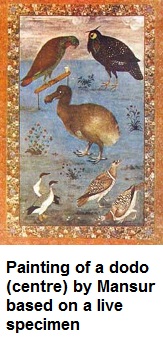
Akbar brought Persian and Indian artists together, and a new style of painting was born -the Indo Persian School of painting. Miniature paintings were also used to illustrate manuscripts and books, examples of which can be seen in the Baburnama, the Akbarnama and the Tutinama. The main themes of the paintings of the Kangra and the Rajasthani schools was devotional. Several paintings illustrate stories about Radha and Krishna, and the gopis. The Deccan paintings foccused more on court scenes and scenes of battle. Portraits were also made by all the school. The emphasis was on detail and the use of vibrant colours. The artists used natural colours derived from minrals, plants,conch shells, gold and silver to create the miniatures.It sometimes took weeks to prepare some of the colours
.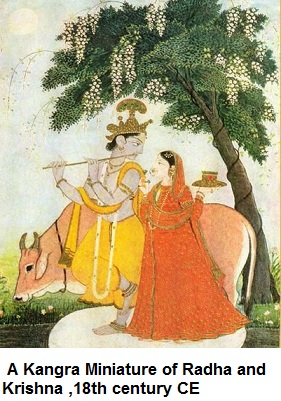
Music: India has an ancient tradition of music. Folk music flourished along with classical music. The Turks brought with them their own form of music and instruments like the sarangi and the rabab. Amir Khasru, the most famous musician of the Delhi Sultanate period, fused Hindustani music with Persian and Turkish music to create new styles like the qwwali and the khayal. He is also believed to have invented the tabla and the sitar. Akbar was a great patron of music.Tansen, one of the navratnas of Akbar's court, is considered one of the greatest composers invented several new ragas, like Darbari, Malhar, Deepak, Mand and Todi. It is said that tansen could bring rain with his Raag Malhar and start fires with his singing of the Raag Deepak.
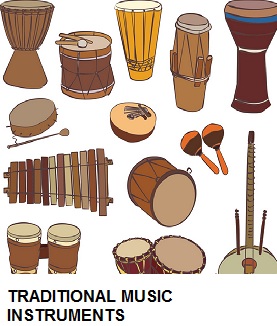
Dance The ealiest form of dance was a way of telling stories, especially from mythology and the epics, and was normally held in temples. When rulers began to patronise the dancers dance performances moved out of the temples to the royal courts.
In the medieval period, different styles of dance forms grew in different parts of the country. Bharatnayam evolved in Tamil Nadu, Kuchipudi in Andhra Pradesh, Odissi in Odisha, Kathakali in Kerala, Manipuri in Manipur, and Kathak in North India.
Kathak was the style that the Mughals favoured. It gets its name from the word katha, which means 'story ' Sanskrit. Kathak was originally used to dramatic stories from the epics. It involved intricate and fast movements of the feet and a variety of bhaavs or facial expressions. Soon the nawabs of the regional kingdoms also patronised it. Different gharanas of Kathak evolved, such as the Lucknow, Jaipur and the Benares gharanas.
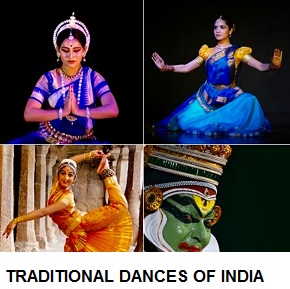
Architecture: The medieval architecture of Bengal was very different from that of the rest of India. Both temples and mosques were built here during this period. But what was unique about medieval Bangali architecture was the extensive use of terracotta and burnt bricks as the building material, and the inverted boat shaped roof of the temples.
Students / Parents Reviews [10]
I have spent a wonderful time in Abhyas academy. It has made my reasoning more apt, English more stronger and Maths an interesting subject for me. It has given me a habbit of self studying

Yatharthi Sharma
10thOne of the best institutes to develope a child interest in studies.Provides SST and English knowledge also unlike other institutes. Teachers are co operative and friendly online tests andPPT develope practical knowledge also.

Aman Kumar Shrivastava
10thBeing a parent, I saw my daughter improvement in her studies by seeing a good result in all day to day compititive exam TMO, NSO, IEO etc and as well as studies. I have got a fruitful result from my daughter.

Prisha Gupta
8thIt was good as the experience because as we had come here we had been improved in a such envirnment created here.Extra is taught which is beneficial for future.

Eshan Arora
8thMy experience was very good with Abhyas academy. I am studying here from 6th class and I am satisfied by its results in my life. I improved a lot here ahead of school syllabus.

Ayan Ghosh
8thAbout Abhyas metholodology the teachers are very nice and hardworking toward students.The Centre Head Mrs Anu Sethi is also a brilliant teacher.Abhyas has taught me how to overcome problems and has always taken my doubts and suppoeted me.

Shreya Shrivastava
8thAbhyas is a complete education Institute. Here extreme care is taken by teacher with the help of regular exam. Extra classes also conducted by the institute, if the student is weak.

Om Umang
10thAbhyas Methodology is very good. It is based on according to student and each child manages accordingly to its properly. Methodology has improved the abilities of students to shine them in future.

Manish Kumar
10thMy experience with Abhyas is very good. I have learnt many things here like vedic maths and reasoning also. Teachers here first take our doubts and then there are assignments to verify our weak points.

Shivam Rana
7thIt was a good experience with Abhyas Academy. I even faced problems in starting but slowly and steadily overcomed. Especially reasoning classes helped me a lot.
